Abstract
A vibrating probe was used to measure the changes in ionic currents around gravistimulated roots of Zea mays L. in an effort to determine whether these currents are involved in stimulus transduction from the root cap to the elongation zone. We did not observe a migration of the previously reported auxin-insensitive current efflux associated with gravity sensing (T. Björkman, A.C. Leopold [1987] Plant Physiol 84:841-846) back from the root cap. Instead, beginning 10 to 15 min after gravistimulation, an asymmetry in current developed simultaneously along the root around the meristem and apical regions of the elongation zone. This asymmetry comprised a proton efflux from the upper surface, which was superimposed on the symmetrical pattern around the vertical root. The gravity-induced proton efflux was inhibited by the application of the auxin transport inhibitor, 2,3,5-triiodobenzoic acid, whereas the calcium channel blocker, lanthanum, had little effect. Because the onset of the gravity-induced current asymmetry coincided both spatially and temporally with the onset of the differential growth response, we suggest that this current efflux may result from auxin-requiring acid-growth phenomena in the upper root tissue. The implications of this simultaneous onset of both proton efflux and elongation for theories about gravity stimulus transduction are discussed.
Full text
PDF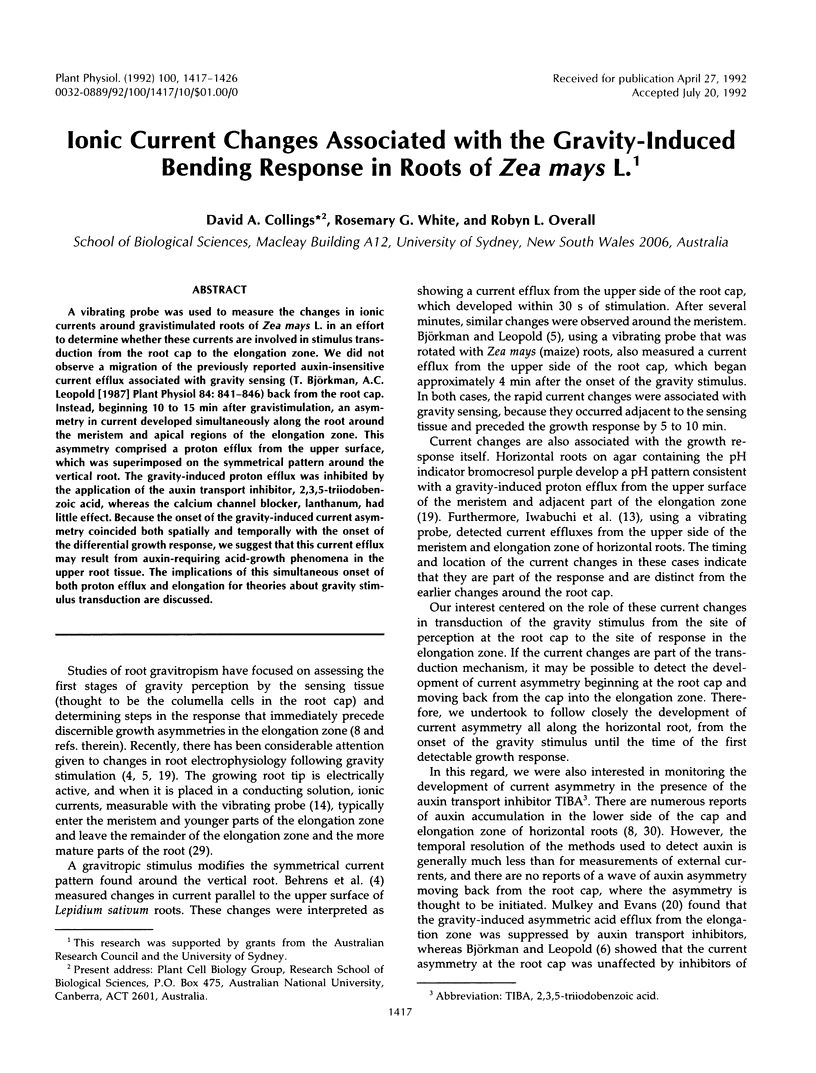
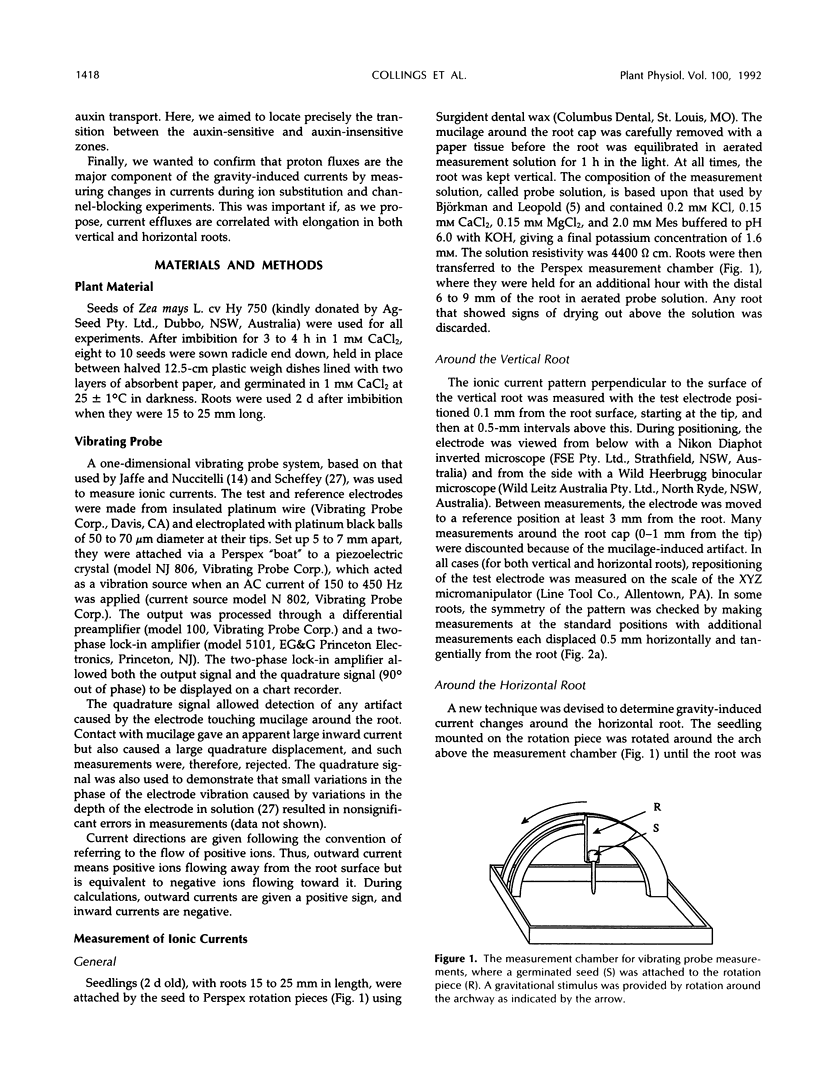
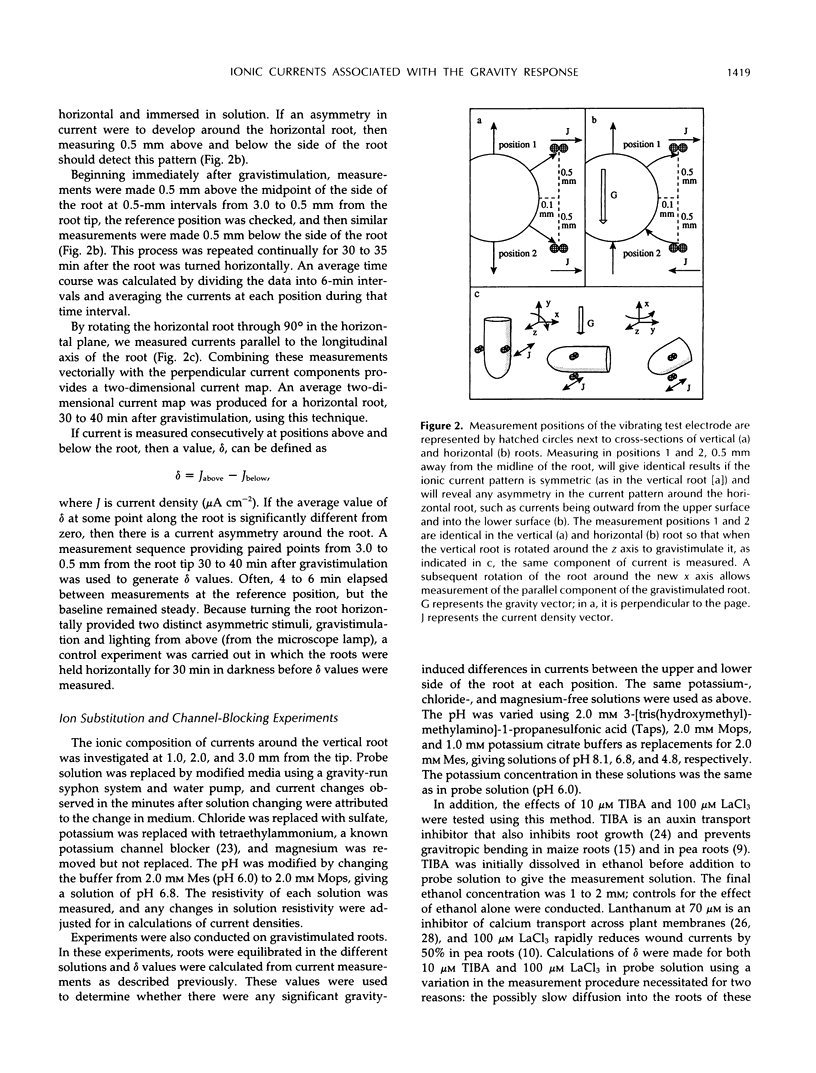
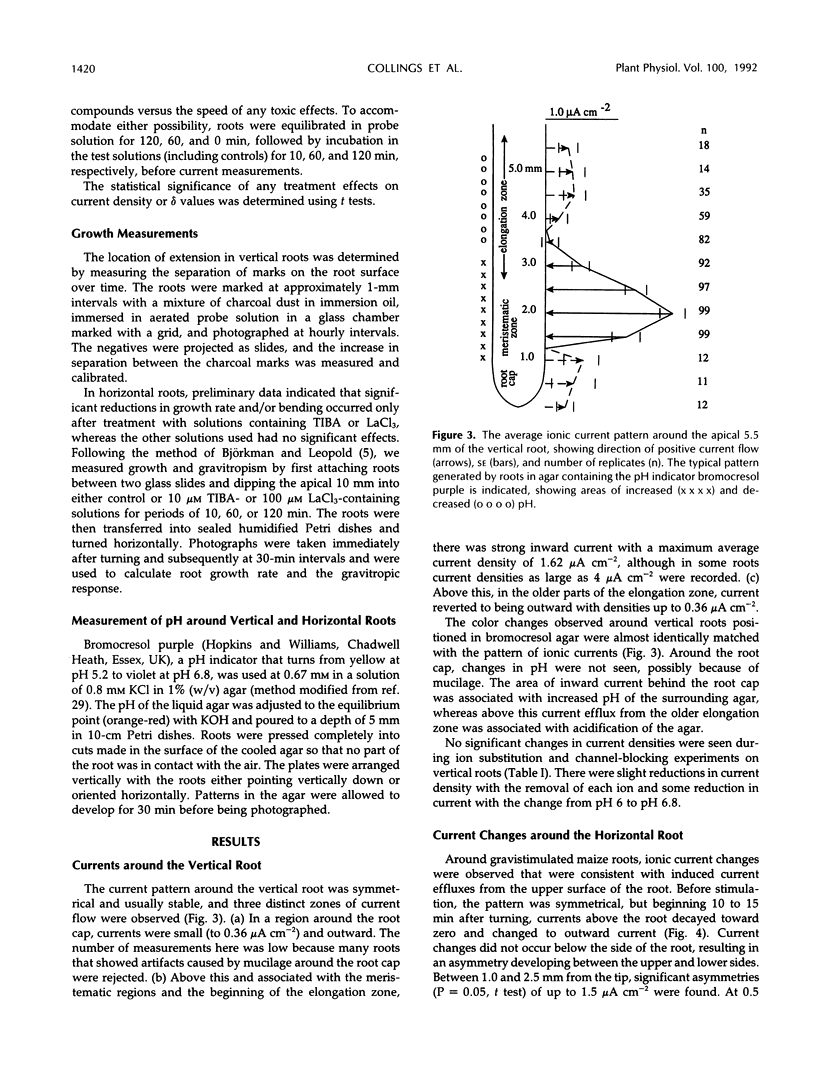
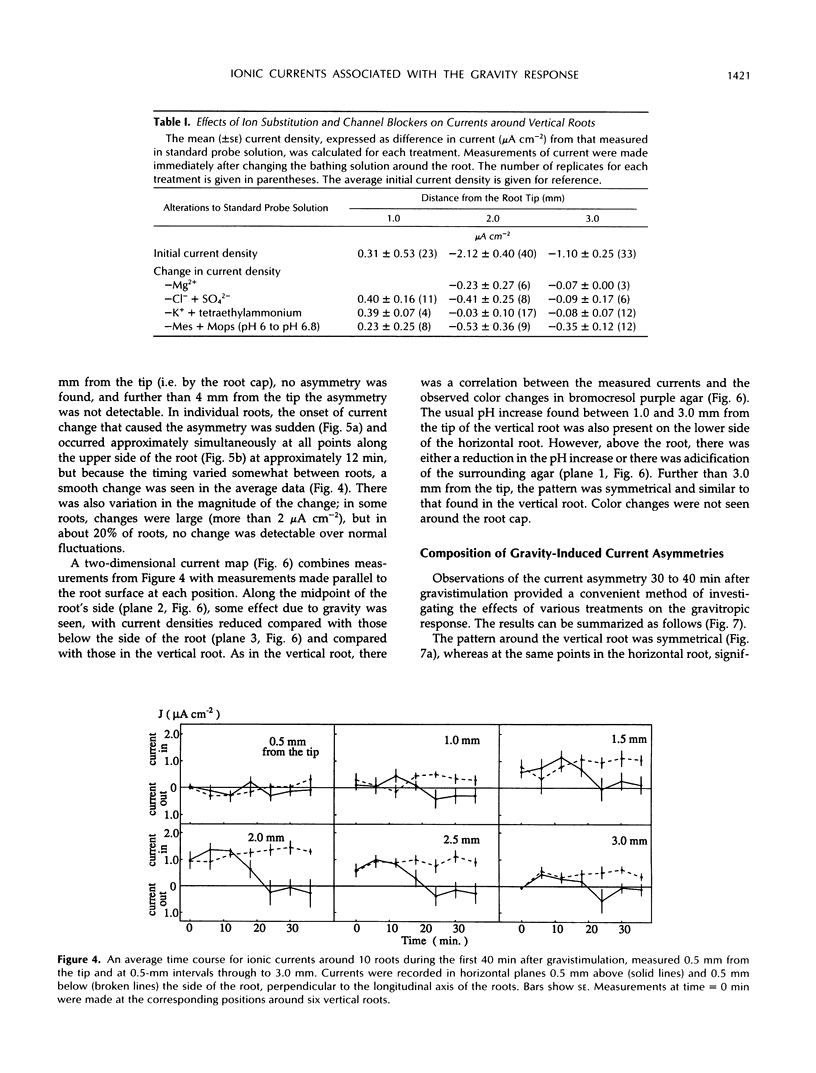
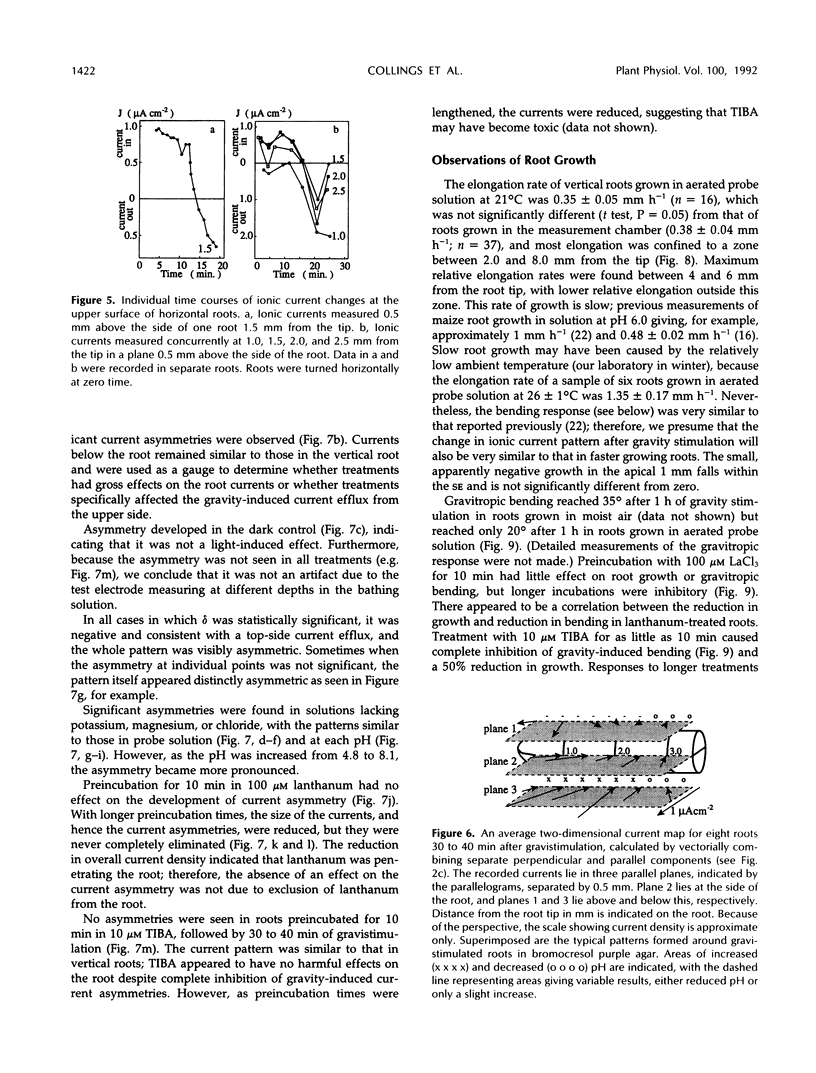
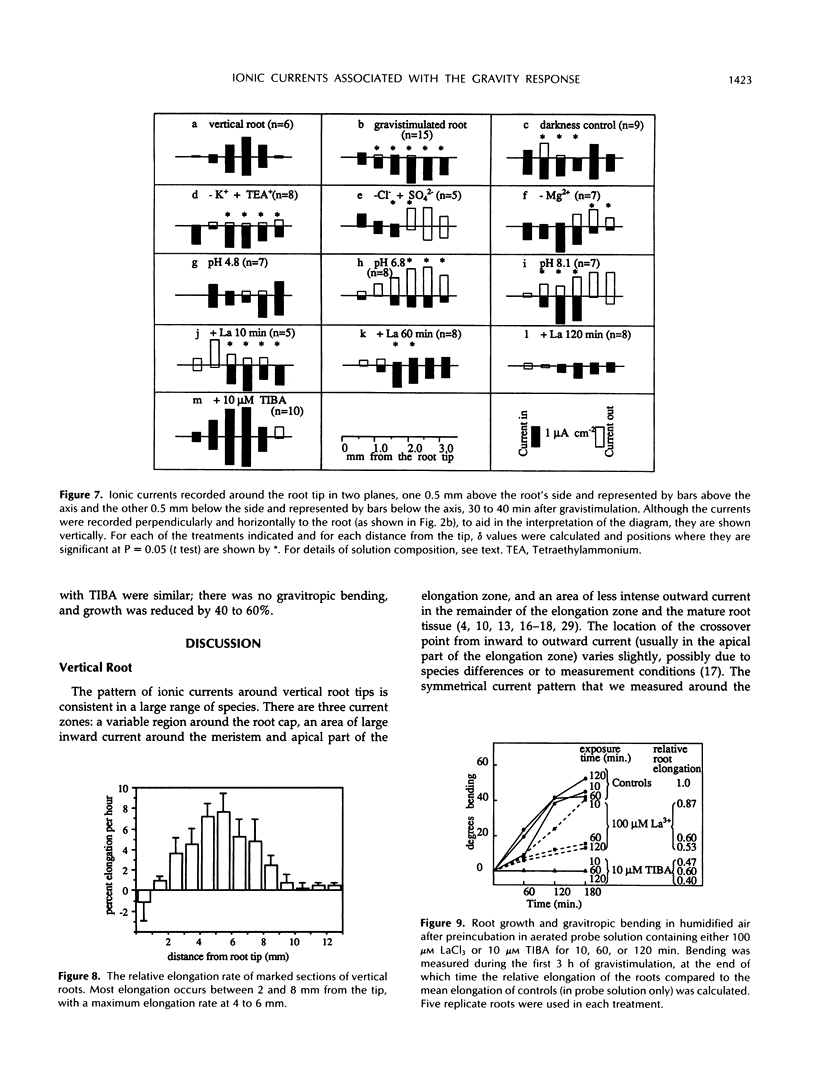
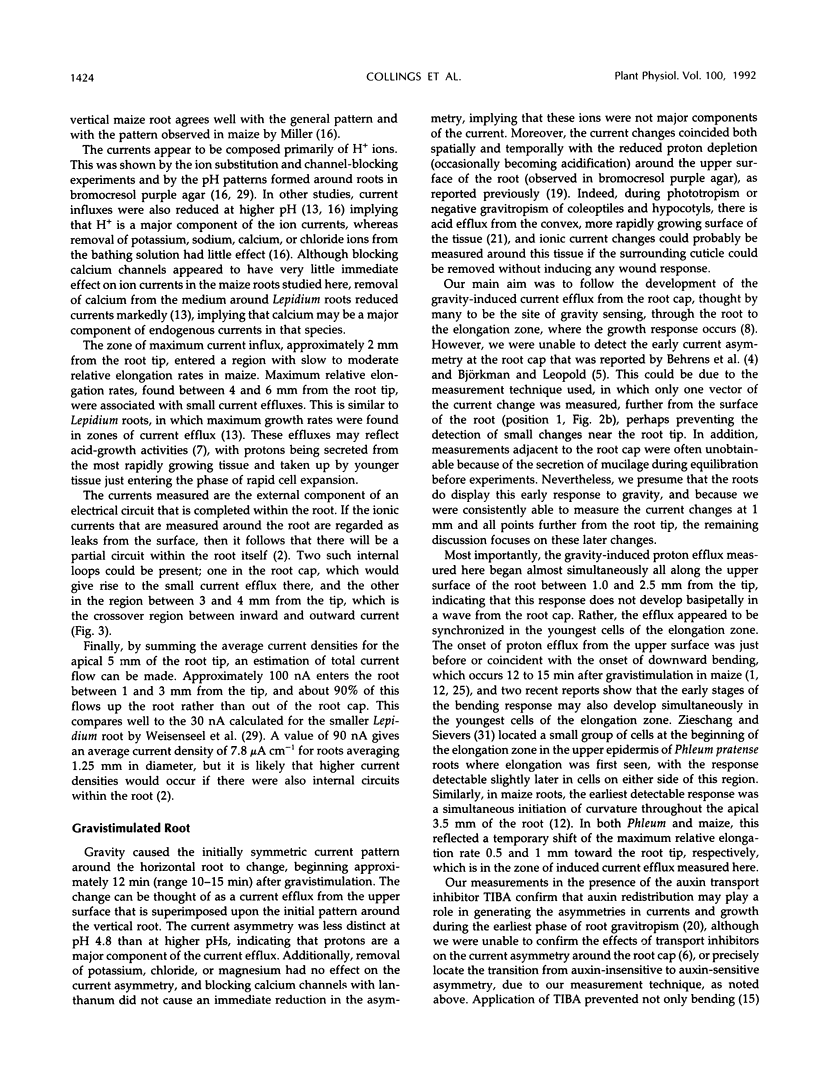
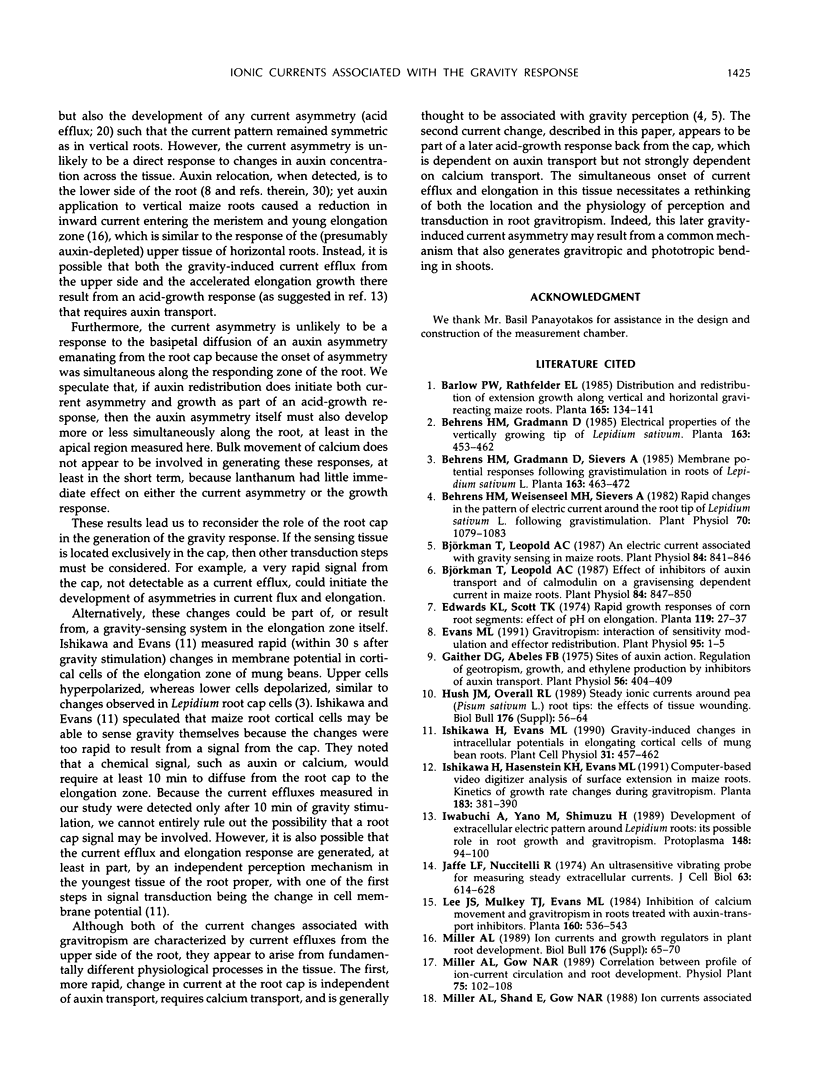
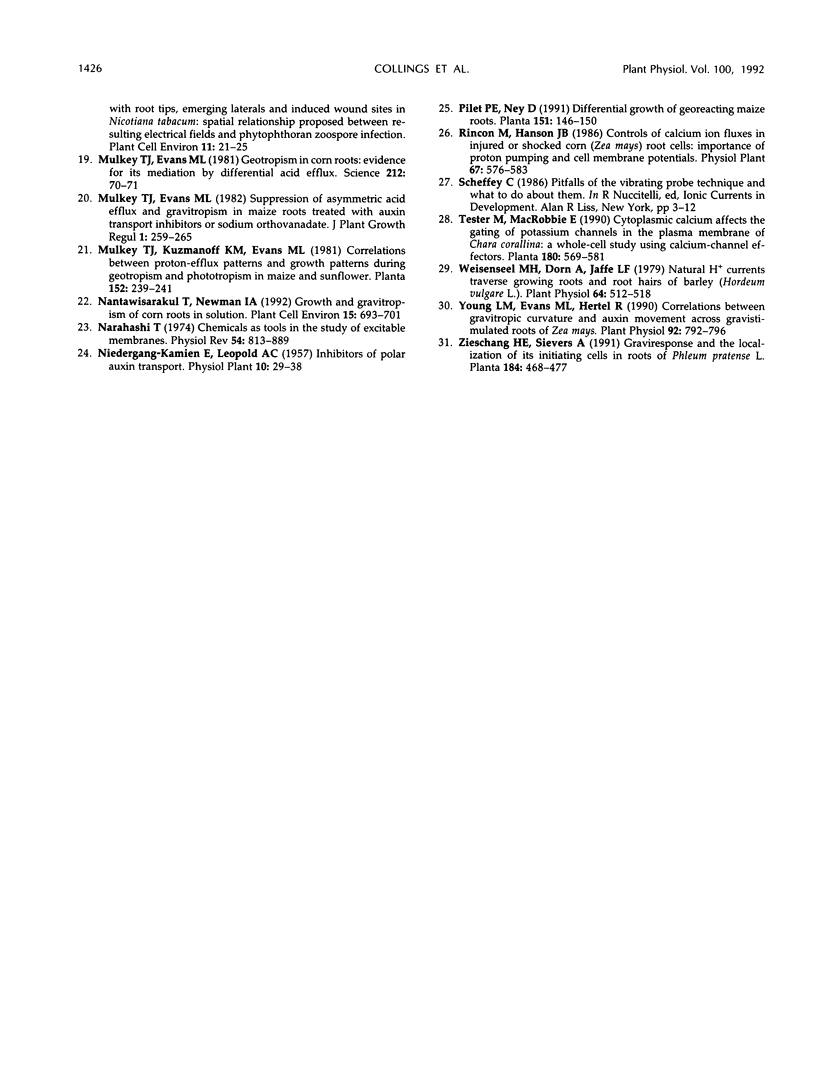
Selected References
These references are in PubMed. This may not be the complete list of references from this article.
- Behrens H. M., Weisenseel M. H., Sievers A. Rapid Changes in the Pattern of Electric Current around the Root Tip of Lepidium sativum L. following Gravistimulation. Plant Physiol. 1982 Oct;70(4):1079–1083. doi: 10.1104/pp.70.4.1079. [DOI] [PMC free article] [PubMed] [Google Scholar]
- Björkman T., Leopold A. C. An electric current associated with gravity sensing in maize roots. Plant Physiol. 1987;84:841–846. doi: 10.1104/pp.84.3.841. [DOI] [PMC free article] [PubMed] [Google Scholar]
- Björkman T., Leopold A. C. Effect of inhibitors of auxin transport and of calmodulin on a gravisensing-dependent current in maize roots. Plant Physiol. 1987;84:847–850. doi: 10.1104/pp.84.3.847. [DOI] [PMC free article] [PubMed] [Google Scholar]
- Evans M. L. Gravitropism: interaction of sensitivity modulation and effector redistribution. Plant Physiol. 1991;95:1–5. doi: 10.1104/pp.95.1.1. [DOI] [PMC free article] [PubMed] [Google Scholar]
- Gaither D. H. Sites of auxin action: regulation of geotropism, growth, and ethylene production by inhibitors of auxin transport. Plant Physiol. 1975 Sep;56(3):404–409. doi: 10.1104/pp.56.3.404. [DOI] [PMC free article] [PubMed] [Google Scholar]
- Ishikawa H., Evans M. L. Gravity-induced changes in intracellular potentials in elongating cortical cells of mung bean roots. Plant Cell Physiol. 1990 Jun;31(4):457–462. [PubMed] [Google Scholar]
- Ishikawa H., Hasenstein K. H., Evans M. L. Computer-based video digitizer analysis of surface extension in maize roots: kinetics of growth rate changes during gravitropism. Planta. 1991 Feb;183(3):381–390. doi: 10.1007/BF00197737. [DOI] [PubMed] [Google Scholar]
- Jaffe L. F., Nuccitelli R. An ultrasensitive vibrating probe for measuring steady extracellular currents. J Cell Biol. 1974 Nov;63(2 Pt 1):614–628. doi: 10.1083/jcb.63.2.614. [DOI] [PMC free article] [PubMed] [Google Scholar]
- Lee J. S., Mulkey T. J., Evans M. L. Inhibition of polar calcium movement and gravitropism in roots treated with auxin-transport inhibitors. Planta. 1984;160:536–543. [PubMed] [Google Scholar]
- Mulkey T. J., Evans M. L. Geotropism in corn roots: evidence for its mediation by differential Acid efflux. Science. 1981 Apr 3;212(4490):70–71. doi: 10.1126/science.212.4490.70. [DOI] [PubMed] [Google Scholar]
- Narahashi T. Chemicals as tools in the study of excitable membranes. Physiol Rev. 1974 Oct;54(4):813–889. doi: 10.1152/physrev.1974.54.4.813. [DOI] [PubMed] [Google Scholar]
- Weisenseel M. H., Dorn A., Jaffe L. F. Natural H Currents Traverse Growing Roots and Root Hairs of Barley (Hordeum vulgare L.). Plant Physiol. 1979 Sep;64(3):512–518. doi: 10.1104/pp.64.3.512. [DOI] [PMC free article] [PubMed] [Google Scholar]
- Young L. M., Evans M. L., Hertel R. Correlations between gravitropic curvature and auxin movement across gravistimulated roots of Zea mays. Plant Physiol. 1990;92:792–796. doi: 10.1104/pp.92.3.792. [DOI] [PMC free article] [PubMed] [Google Scholar]
- Zieschang H. E., Sievers A. Graviresponse and the localization of its initiating cells in roots of Phleum pratense L. Planta. 1991 Jul;184(4):468–477. doi: 10.1007/BF00197894. [DOI] [PubMed] [Google Scholar]


